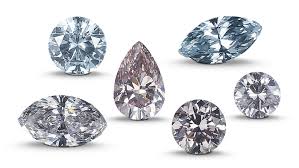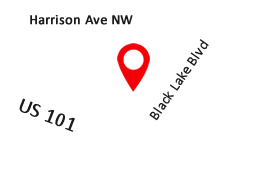
Deep Cut Diamond - A stone is cut too deep and the light is not being controlled to go out the top. Some diamonds are cut to have maximum weight rather than maximum beauty. Diamonds cut too deep retain weight, not beauty.
Shallow Cut Diamond - Looking from the top, it appears to be much larger than it really is. This is called a "fish-eye" or sometimes a "swindle cut," so-called because you can take a diamond of .80ct with this type of spread cut and make it appear as a 1.00ct diamond. Some people are fooled into thinking that they are getting a larger diamond for the money.
Ideal Cut Diamond - Light is coming in the top, traveling around the diamond interior and exiting out the top of the stone. No matter where the light enters this diamond, the light will go out the top. This is a brilliant and beautiful stone. Ideal cut diamonds are always more beautiful!

Colors D, E, F - The D-E-F colors are known as the colorless grades. Grade "D" is reserved for larger diamonds whose colors can be more accurately graded due to their size. Diamonds less than .50 carats usually receive a top grade of "F" due to the greater difficulty of precisely grading a small diamond.
Colors G, H, I - These are known as the "face white" or "face up colorless" grades because they appear colorless when viewed through the "face-up" position or through the table but show a slight tint of color when turned upside down for proper grading. This is due to the brilliance of the stone masking this very slight tint when viewed through the table.
Colors J, K, L - This grading range offers some nice diamonds if they are proportioned properly. A well-cut diamond of the K-L color range will still appear mostly colorless and can save you a good deal of money over a color grade of a higher range. Again, the cut is the key to keeping the stones of slight tint beautiful.
Colors M to Z - The lower colors "M" through "Z" have an increasing amount of yellow tint, ranging through the off colors and ending at the end of the scale, beyond which diamonds are considered to have a fancy yellow color. Be wary of jewelers offering fancy yellow-colored diamonds, however. Sometimes they grade off-color yellows as fancies without a proper gemological evaluation by a recognized gemological laboratory. The term fancy besides any diamond color imparts a higher value and higher price to the stone. Do not accept the term fancy for any diamond you purchase unless it is accompanied by an origin of color report and a diamond grading report from a recognized gemological lab that identifies the stone as being of natural color origin and truly fancy in color.
FLAWLESS GRADE - No inclusions visible using 10x magnification.
VVS1 Grade - One tiny inclusion on the very upper outer edge of the diamond.
VVS2 Grade - Additional pinpoint inclusion but still on the outer perimeter of the diamond.
VS1 Grade - Small pinpoint and small feather on the outer edge of the diamond.
VS2 Grade - Small cloud of pinpoints and small feather, all on the outer edge.
SI1 Grade - A larger cloud of pinpoint inclusions and feather on the outer edge.
SI2 Grade - Cloud of inclusions, feather, and small feather located in the table of stone.





